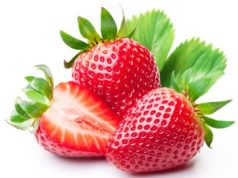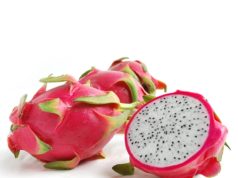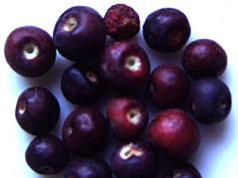Introduction
A disorder where fruit surface cracks mainly due to heavy irrigation or rain after long dry spell. This may occur due to varietal characters, orchard soil management, inappropriate levels of water at maturity stage, light, temperature and micro-nutrient deficiency.
It is generally found in apricot, litchi, cherry, apple, pomegranate, citrus, and nectarine etc. The average loss of fruit cracking ranges from 50-85 %. All cracked fruits loose their value for fresh market and they are used for processing only (especially for fruit juice) if they are not effected by fungus.
Cracked fruits are susceptible to storage disease, have shorter storage as well as shelf-life It is revealed that the shape of the fruit plays an important role in fruit cracking. Kidney and heart shape cultivars have deeper stem cavity and the rain drops can stay there for the longer time giving possibility for more water absorption through skin.
Causes of fruit cracking
There are many causes of fruit cracking which includes:
- The soil type and soil moisture condition of the fruit orchard
- Lack of orchard management
- The quality (volume) of rainfall at one time
- The full quantity and distribution of rainfall during the mature and ripening stage
- Genetically determined susceptibility of grown species and cultivar
Parts of cracking on fruit
There are the three different and well defined type of cracking
- Circular or semi-circular type of cracking around the stem and in the cavity
- Similar fine crack at the apical end of fruits
- Many often deep cracks on the side of fruit and it is called as later cracking
Types of cracking
Radical cracking: It develops from the radical part of the stem towards the fruit centre. Fruit of nectarine suffers from radiations or by sun rays and cracking take place. This type of splitting is found in nectarine
Concentric cracking: Concentric ring are found on fruit which leads to cracking it may in single fruit which is know as concentric e.g. cherries
[indeed-social-locker sm_list=’fb,tw,go1′ sm_template=’ism_template_1′ sm_list_align=’horizontal’ sm_display_counts=’false’ sm_display_full_name=’true’ locker_template=2 sm_d_text='<h2>This premium content is locked</h2><p>Share This Page To Unlock The Content!</p>’ ism_overlock=’default’ ]
Factors influencing the fruit cracking
(1) Environmental factors
Influence of temperature: – Temperature plays a very important role in the ratio of fruit cracking. Arid and semi-arid zone where temperature is more and humidity or rainfall is very low favours cracking. In general, there was a linear increase in cracking with temperature increase from 10 to 40 0C. Temperature also affects may other factors such as permeability of the cell walls and bio-chemical processes of the cells etc
Wind: In north India, occurrence of loo/hot wind during summer months, a common phenomenon. When such hot wind passes from the litchi fruit surface due to water loss, it becomes hard and inelastic and in case of sudden fluctuation in moisture level leads to cracking in litchi fruit
(2) Fruit Characteristics
- Maturity: – Over maturity which lead cracking of fruit epidermis for example:
Grape over maturity take place in June- July in north India
- Fruit size: – It is generally supposed that large fruits of cherry, pomegranate, peach and nectarine are more prone to the cracking then the smaller one
- Fruit firmness: It is found that firm fleshed fruits such as cherry, litchi are more susceptible to fruit cracking than soft fleshed ones. Cracking of fruits is caused by excess uptake of water resulting in bursting of skin
(3) Lack of orchard management.
- Moisture stress: Moisture imbalance and heavy rainfall or irrigation after a prolong dry spell, sudden and high fluctuation in the water supply to plants may cause cracking of the fruits e.g. lemon, litchi and cherry
- Nutrient: The deficiency of boron and calcium is responsible factors for cracking in cherry, pomegranate and litchi
- Insect-pest and disease: In mango, due to bacterial canker, there is the appearance of small dark green water-shaped spots, which is finally assuming the shape of raised black spots. These areas on the fruit develop longitudinal cracks and gum starts oozing out from the splits
- Bagging: It is also a remedial operation to escape the sunlight from the plant surface because water is loosed by transpiration though stomata
- Early picking: Early picking of fruits is also a remedial measure to overcome cracking. This does not allow to over maturity or over ripening which cause cracking of fruit
Measures to Control fruit cracking
- Selection of site: Selection of site is a most effective way to minimize rain drainage of fruit orchard. The appropriate site should be with little or no rain incident at near harvesting time. To choice cultivars which show some resistance to the rain induced fruit crack. Physically producing fruit by water resistance covers from heavy rainfall
- Rain cover protection: To save the cracking problem at maturity stage, fruit plants were covered only on the top and permit free airflow into the sides
- Moisture conservation: Conservation of moisture during hot dry month of May and June is very necessary because during high temperature the rate of transpiration rate become high due to rapid evaporation
- Regular irrigation: Regular application of water in the orchard is the main factor which maintains moisture percent in fruit. These are very sensitive to high and stress water condition
- Planting wind break: Suitable wind break should be planted around the orchard boundary and it should be at a right angle to the direction of prevailing wind. A row of tall growing trees, such as seedling mango and jamun are suitable wind breaks
- Mulching: An organic mulch such as leaves, straw are good source of conserving moisture by reducing evaporation, preventing emergence of weed, and on decaying adds humus to the soil. Maintenance of soil moisture reduce the cracking percentage of fruit trees
- Resistant varieties: The most effective way to avoid fruit cracking is to grow highly resistant cultivars
- Hormonal spraying: Litchi spraying of GA3 at 40ppm or NAA 20 mg/lit. and 2, 4-D 10mg/l, 2,4,5-T 10mg L-1 and Ethephon 10mg L-1 have been reported to reduce the incidence of fruit cracking, although they did not entirely prevent it (Srivastava and Singh, 1969; Veera and Das, 1971)
- Chemical Spraying: Based on the result of trail with calcium chloride and applied growing technologies it seems that 0.35-10% calcium chloride solution is effective in cherry orchards to reduce the cracking of fruits. Bullock (1952) had studied different metallic salts and their effect on reducing fruit cracking in cherry. Copper salts are used for spraying in horticulture for a long time such as Bordeaux mixture spraying with copper sulphate (CuSO4) solution in 0.1% concentration has decreased the fruit cracking
- Anti-transparent application: Application of anti-transparent which check transpiration or loss of water through the leaf surface or plant surface by stomata e.g. Glycerin and wax line
- Varietal responder: Litchi cultivars which have relatively thin skin few tubercles per unit area and rounded to flat in shape are less prone to cracking. Early cultivars are more susceptible than late cultivars:
Fruits Cracking occurs in different varieties Mango Amin Prince, Dashehari, Nisar Pasand Banana Harichal and Rasthali Litchi Dehradun (27.4%), Muzaffarpur (16.8%), Seedless No-1 (16.7%), Calcuttia late (3.4%), Seedless No-2 (0.3%). Lemon Italian lemon (31.8%), Eureka (28.8%), Malta (21.3%), Columbia (20%), Nepali Oblong (12.5%) Cherry Hedelfinge Van and Germerdorfi
- Hormonal factor: Litchi with cracked fruit skin and seed had lower level of auxin. The gibberellins level was higher in skin, seed and aril of cracked fruit. Cytokinins and abscisic acid (ABA) were also more in skin aril and seed of cracked fruits
- Effect of cracking on chemical composition of fruit: – The cracked litchi fruit contained higher nitrogen, potash and phosphorous level and lower calcium and zinc than the normal fruits. There was no difference in the pH and TSS contents in cracked and normal fruits. Normal fruits contain higher moisture content than the cracked fruits
- Nature of cracking of some fruits
I. Litchi: Fruit cracking of litchi is directly associated with variety, irrigation interval due to hot wind, endogenous levels of growth regulators, and higher levels of gibberellins and abscisic acid in the skin , aril and seed. Spray with boron 0.4% at the pit hardening stage of fruits reduces the incidence
II. Pomegranate: In young fruits, this disorder is due to boron deficiency but in fully grown trees it is due to moisture imbalance condition due to irregular irrigation or rains. Cvs. like Bedana Bosec, Khogand, Jalore Seedless are comparatively cracking tolerant. Spray borax at 0.1% or calcium hydroxide on leaves and fruits starting after fruit set and maintain soil moisture
Snapshot of Fruit Cracking in Pomegranate fruit
References:
Srivastava, R.P. and Singh, L.1969. Effect of growth substances on the quality of litchi. Horticulture Science 1: 1-6
Veera, S and Das, R.C. 1971. Effect of 2,4-D, NAA, GA and 2,4,5-T on fruit weight and fruit cracking in litchi (Litchi chinensis Sonn) var. Muzaffarpur. Plant Science 3: 126-128
Bullock, R.M. 1952. A study of some in organic compounds and growth promoting chemicals in relation to fruit cracking of cherries at maturity. Proceeding of the American Society for Horticulture Science 59: 243-253
Contributed By:
Dr. Rakesh Kumar*, Dr. Parshant Bakshi** and Dr. J. N. Srivastava*
*Jr.Scientists, RHRSS, Bhaderwah, SKUAST-Jammu
** Assistant Professor (Fruit Science) SKUAST-J, Main Campus, Chatha
[/indeed-social-locker]









